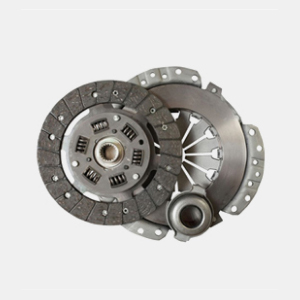-
 Afrikaans
Afrikaans -
 Albanian
Albanian -
 Amharic
Amharic -
 Arabic
Arabic -
 Armenian
Armenian -
 Azerbaijani
Azerbaijani -
 Basque
Basque -
 Belarusian
Belarusian -
 Bengali
Bengali -
 Bosnian
Bosnian -
 Bulgarian
Bulgarian -
 Catalan
Catalan -
 Cebuano
Cebuano -
 China
China -
 Corsican
Corsican -
 Croatian
Croatian -
 Czech
Czech -
 Danish
Danish -
 Dutch
Dutch -
 English
English -
 Esperanto
Esperanto -
 Estonian
Estonian -
 Finnish
Finnish -
 French
French -
 Frisian
Frisian -
 Galician
Galician -
 Georgian
Georgian -
 German
German -
 Greek
Greek -
 Gujarati
Gujarati -
 Haitian Creole
Haitian Creole -
 hausa
hausa -
 hawaiian
hawaiian -
 Hebrew
Hebrew -
 Hindi
Hindi -
 Miao
Miao -
 Hungarian
Hungarian -
 Icelandic
Icelandic -
 igbo
igbo -
 Indonesian
Indonesian -
 irish
irish -
 Italian
Italian -
 Japanese
Japanese -
 Javanese
Javanese -
 Kannada
Kannada -
 kazakh
kazakh -
 Khmer
Khmer -
 Rwandese
Rwandese -
 Korean
Korean -
 Kurdish
Kurdish -
 Kyrgyz
Kyrgyz -
 Lao
Lao -
 Latin
Latin -
 Latvian
Latvian -
 Lithuanian
Lithuanian -
 Luxembourgish
Luxembourgish -
 Macedonian
Macedonian -
 Malgashi
Malgashi -
 Malay
Malay -
 Malayalam
Malayalam -
 Maltese
Maltese -
 Maori
Maori -
 Marathi
Marathi -
 Mongolian
Mongolian -
 Myanmar
Myanmar -
 Nepali
Nepali -
 Norwegian
Norwegian -
 Norwegian
Norwegian -
 Occitan
Occitan -
 Pashto
Pashto -
 Persian
Persian -
 Polish
Polish -
 Portuguese
Portuguese -
 Punjabi
Punjabi -
 Romanian
Romanian -
 Russian
Russian -
 Samoan
Samoan -
 Scottish Gaelic
Scottish Gaelic -
 Serbian
Serbian -
 Sesotho
Sesotho -
 Shona
Shona -
 Sindhi
Sindhi -
 Sinhala
Sinhala -
 Slovak
Slovak -
 Slovenian
Slovenian -
 Somali
Somali -
 Spanish
Spanish -
 Sundanese
Sundanese -
 Swahili
Swahili -
 Swedish
Swedish -
 Tagalog
Tagalog -
 Tajik
Tajik -
 Tamil
Tamil -
 Tatar
Tatar -
 Telugu
Telugu -
 Thai
Thai -
 Turkish
Turkish -
 Turkmen
Turkmen -
 Ukrainian
Ukrainian -
 Urdu
Urdu -
 Uighur
Uighur -
 Uzbek
Uzbek -
 Vietnamese
Vietnamese -
 Welsh
Welsh -
 Bantu
Bantu -
 Yiddish
Yiddish -
 Yoruba
Yoruba -
 Zulu
Zulu
Innovative Insect Enclosure Design Using Mesh for Optimal Visibility and Ventilation
The Mesh Insect Cage A Revolutionary Tool for Entomological Studies and Eco-Friendly Pest Control
In recent years, the increasing need for effective pest management strategies has led to the development of innovative solutions, one of which is the mesh insect cage. This unique tool not only serves the interests of entomologists studying insect behavior but also plays a pivotal role in sustainable pest control, offering a humane way to monitor and manage insect populations.
Understanding the Mesh Insect Cage
At its core, a mesh insect cage is a lightweight, portable enclosure typically made from fine mesh fabric that prevents insects from escaping while allowing for adequate air circulation. These cages come in various sizes, catering to different species and research needs. Their transparent mesh design allows researchers to observe insect behavior and interactions without the interference of glass or solid materials.
Applications in Entomology
One of the primary applications of mesh insect cages is in the field of entomology. Researchers rely on these cages for a multitude of studies, including breeding experiments, behavioral observations, and ecological assessments. For instance, scientists can introduce specific environmental conditions—such as humidity, temperature, and light—within the cage to study how these factors influence insect life cycles and behaviors.
Additionally, mesh insect cages facilitate the study of insect-pollinator interactions
. By enclosing flowers and their associated pollinators within these cages, researchers can observe which species visit specific plants, gather data on pollination efficiency, and assess the impacts of environmental changes on these critical relationships.mesh insect cage

Sustainable Pest Control
Beyond research, mesh insect cages represent a significant advancement in eco-friendly pest management techniques. Traditional pest control methods often rely on chemical pesticides that can harm non-target species and contribute to environmental degradation. In contrast, mesh insect cages offer a non-toxic alternative for monitoring and controlling pest populations.
Farmers and gardeners can use these cages to trap and assess pest species without resorting to harmful chemicals. By enclosing areas of crops or specific plants, they can effectively trap pests while allowing beneficial insects to thrive, thus maintaining a balanced ecosystem. This method not only reduces pesticide usage but also promotes the health of pollinators and other vital organisms within the agricultural landscape.
Designing the Perfect Mesh Insect Cage
The design of a mesh insect cage plays a crucial role in its effectiveness. Features such as reinforced seams, adjustable openings for easy access, and appropriate mesh size to prevent escape are essential. Moreover, the choice of materials is vital; the mesh must be durable yet lightweight, ensuring that it can withstand outdoor conditions while still being easy to transport.
Conclusion
The mesh insect cage is more than just a simple enclosure; it is a versatile tool that has transformed the fields of entomology and pest management. By facilitating critical research and promoting sustainable agricultural practices, these cages contribute to a deeper understanding of insect life and biodiversity. As we continue to face challenges related to pests and ecological health, the mesh insect cage represents an innovative and responsible approach to studying and managing insect populations. Its proliferation across research laboratories and farms signifies a step toward greater environmental sustainability, ensuring that both scientists and the natural world benefit from its applications.
-
Shipping Plastic Bags for Every NeedNewsJul.24,2025
-
Safety Netting: Your Shield in ConstructionNewsJul.24,2025
-
Plastic Mesh Netting for Everyday UseNewsJul.24,2025
-
Nylon Netting for Every UseNewsJul.24,2025
-
Mesh Breeder Box for Fish TanksNewsJul.24,2025
-
Expanded Steel Mesh Offers Durable VersatilityNewsJul.24,2025











